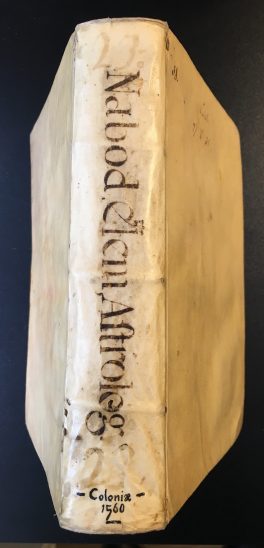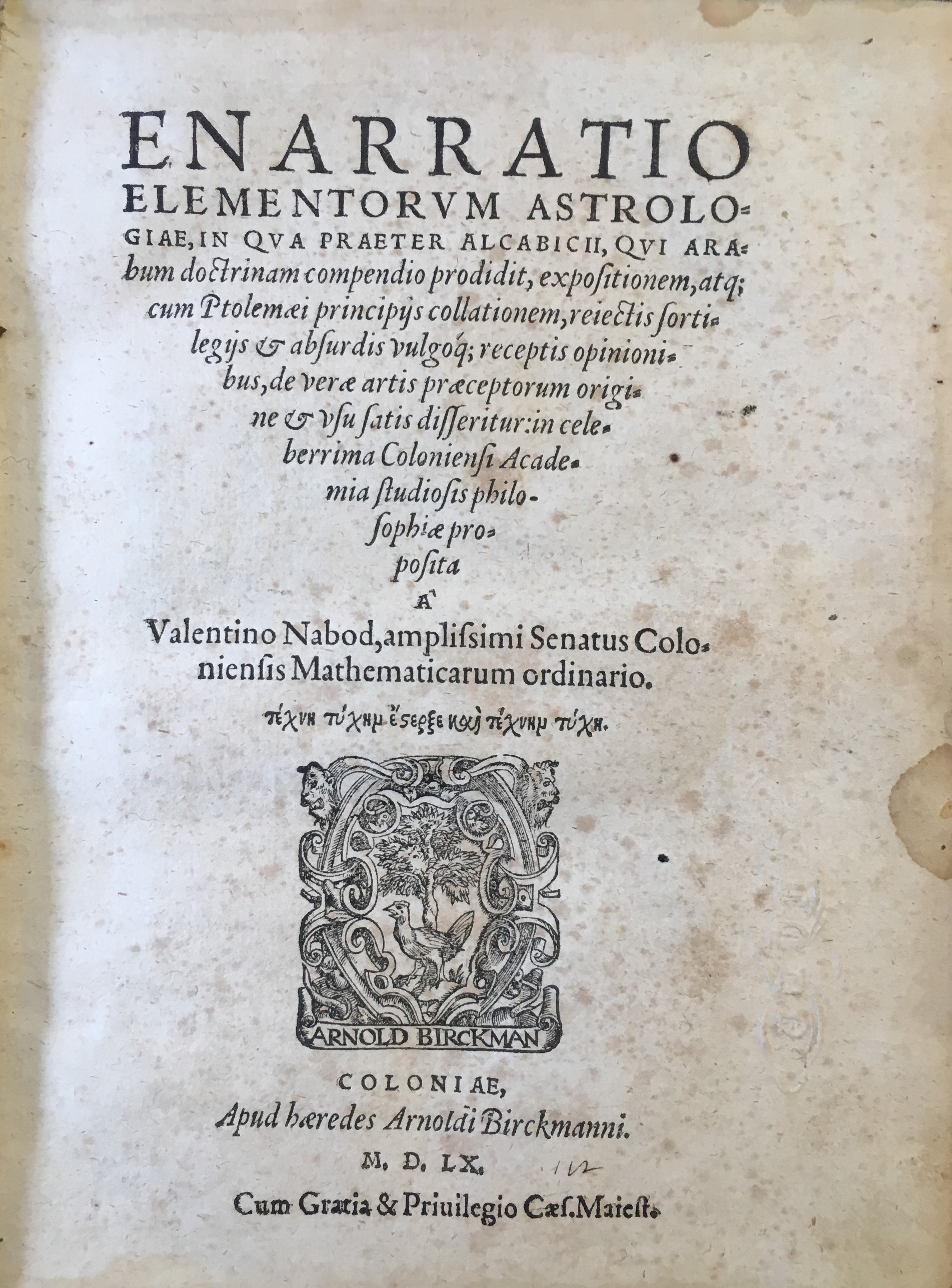Enarratio Elementorum Astrologiae, in qua praeter Alcabicii, qui Arabum doctrinam compendio proditit…
Al-Qabisi Abu Al Saqr 'Abd Al-'Aziz Ibn 'Uthman Ibn 'Ali [Alchabitius] / Naibod, Valentinus (Editor & Commentator).
Synopsis
First edition of this astrological work, based on the writings of Alcabitius.
Al-Qabisi (died 967) was an Arab famous astrologer, he is best known for this work on judicial astrology which was dedicated to the Emir of Aleppo, Prince Sayf al-Dawla al-Hamadani. This is the first edition of of Valentino Naiboda on Al-Qabisi’s treatise which appeared in Cologne. It attracted twelve printed editions into Latin between 1473 and 1521. From Latin the text was translated into several European languages. The Arabic text has received at least three Latin translations, which attracted several commentaries and were, in turn, translated into other European languages. In the 12th century it was translated by Johannes Hispalensis. In 1512 it was published by Melchiorre Sessa in Venice. The 1473 copy, and others until 1521, feature a writing about Al-Qabisi by John of Saxony.
This work is an introductory exposition of some of the fundamental principles of genethlialogy, the astrological science of casting nativities, or divination as to the destinies of newborns. Al-Qabisi’s work became Europe’s authoritative introduction to astrology between the 13th and 16th century. It contains Joannes de Saxonia’s commentary on al-Qasbisi’s work, as well as the notes of Petrus Turrellus. His book is, as its title indicates, an introductory exposition of some of the fundamental principles of horoscope; its present usefulness lies primarily in its quotations from al-Andarzghar, al-Kinde, al-Hind, Ptolemy, Dorotheus, Mas’ashallah, Hermes, and Valens. But it was highly valued in the Middle Ages.
The editor Valentino Naibod (1523-1593) attended Wittenberg in 1544, one year after publication of Copernicus’ De revolutionibus, where he likely encountered the sympathetic “Wittenberg Interpretation” of Erasmus Reinhold. He taught mathematics at the universities of Cologne and Erfurt, adhering to Ptolemaic principles. His commentary on al-Qabisi was banned by the Catholic Church. ‘In the text much use is made of the Tables of Directions of Regiomontanus. Ptolemy is quoted a number of times in the original Greek. Guido Bonatti is cited, as is the speculation from aspects of Giovanni Bianchini. The disagreement between Campanus and Regiomontanus is noted, also that between the Arabs and Ptolemy, and between the Alfonsine and Prutenic Tables’ (Thorndike VI, 119f). Naibod uses the latter to calculate planetary motion. John Dee’s annotated copy is now in the Library of the Royal College of Physicians, London.
Bibliographic references: Adams N 3; BM-STC German 642 Houzeau/Lancaster 4882; Zinner 2239; Thorndike VI, 119f; BNHCat N 2. Grassi p. 483; Dewhirst I.1, 781; Hamel II, 187f; Cantamessa 5437; DSB XI, 226.








